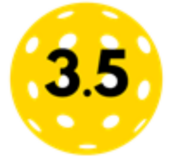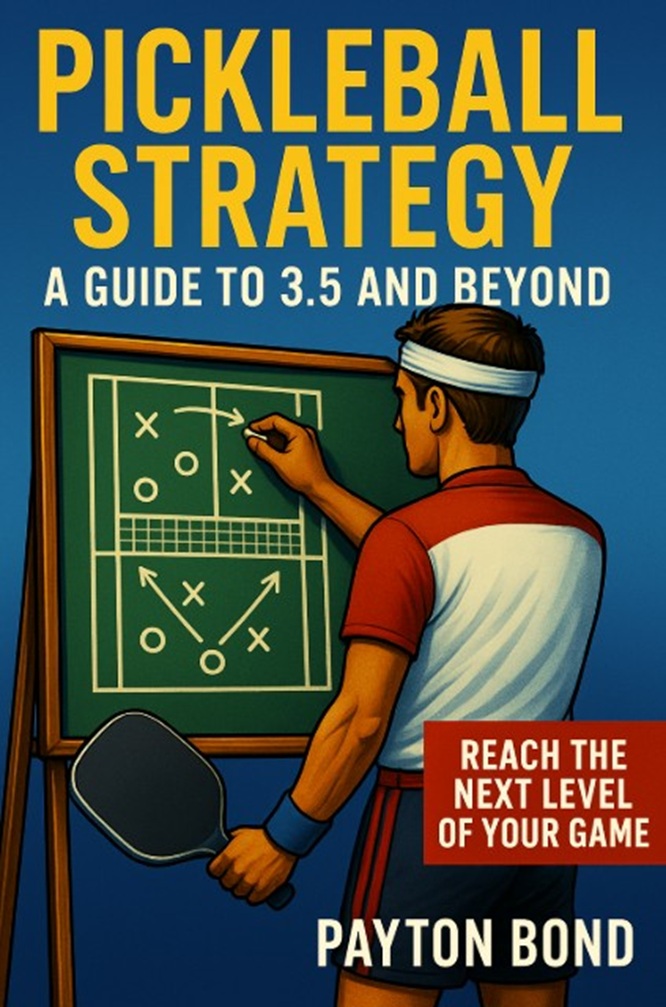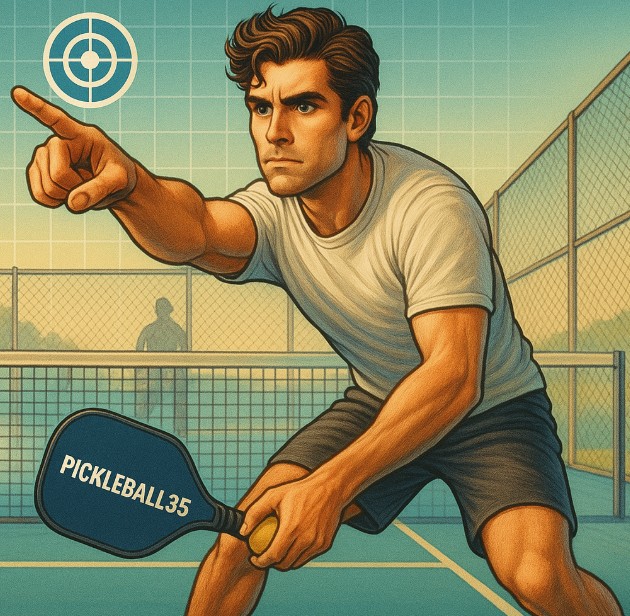
As you progress toward the 3.5 skill level and beyond, it’s time to level up your serve return strategy. Sure, getting the ball in play is always important, but now it’s about placing your returns with surgical precision to disrupt your opponent’s third shot.
The secret weapon? Target their backhand. Most players treat their backhand like an old treadmill—functional but neglected. By forcing your opponent to use it, you create weaker responses and keep them on the defensive.
Awareness and Control
Your first step is to know your opponent. Before the serve, do a quick inventory of where your opponent’s backhands are.
- Right-handed players: Aim slightly left of center to force backhand responses.
- Left-handed players: Reverse it—slightly right of center.
- Mixed pair: If you have 2 backhands in the middle, always aim for that sweet spot.
Good players are quick and will always try to come around your return shot aimed at their backhand to use their forehand. Even if they try to dance around the ball to use their forehand, that extra movement adds complexity to their shot (and often errors).
Serve Return Strategies for Common Scenarios
Two Right-Handed Opponents
When both players are right-handed, your job is simple:
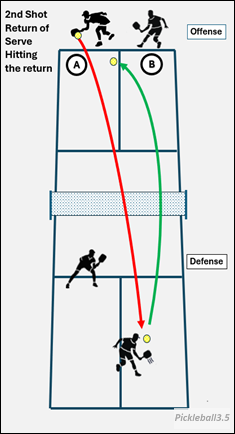
Primary Target: Aim slightly left of center toward the server (Player A).
Why it works: This forces Player A to use their weaker backhand, creating a less effective third shot.
Ideal Outcome: While Player B could step in to take the return with their forehand, often Player A attempts the backhand, which is exactly what you want.
On the Flip Side: Player B Is Serving
When Player B is the server, the strategy remains consistent but flips:
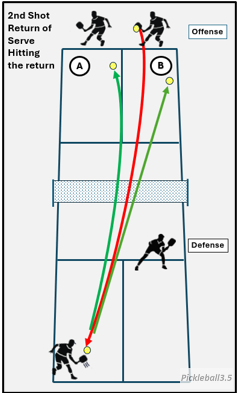
Primary Target: Aim slightly left of center, again toward Player A.
Why it works: This placement often entices Player A to respond with their backhand, giving you the upper hand.
Alternate Play: You can also target Player B’s backhand directly, but this is a riskier shot as it involves hitting cross-court toward the sideline. Save this for situations where you’ve practiced it extensively.
Two Left-Handed Opponents
For two left-handed players, simply mirror the right-handed strategy:
Primary Target: Aim slightly right of center to force the backhand response from Player A or Player B.
Right-Handed and Left-Handed Opponents (The Mix)
When opponents are mixed-handed, this is where things get interesting:
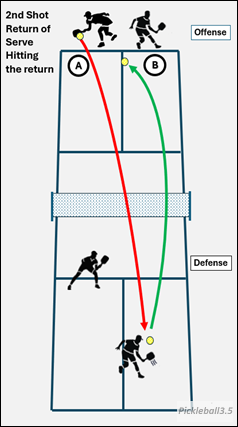
Golden Opportunity: Many mixed pairs don’t use stacking, leaving two backhands in the middle.
Primary Target: Return the serve up the middle to exploit this gap.
Why it works: Without a forehand in the center, your opponents will struggle to use a forehand and you will likely get a backhand return.
This is what you want.
To advance in pickleball, seeing two backhands in the middle is a scenario you should always take advantage of.
Left-Handed Server, Right-Handed Partner
If the server (Player A) is left-handed and their partner (Player B) is right-handed:
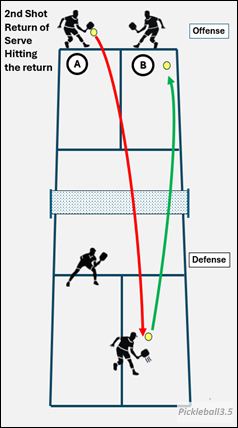
Target the Backhand of the Player in Front of You (Player B):
- Aim your return at Player B’s backhand if they are directly across from you.
- Why it works: A well-placed shot to Player B’s backhand makes it harder for them to execute an effective third shot.
Avoid Returning Up the Middle:
- If you return up the middle, both players have the opportunity to use their forehands.
- Why it matters: With two forehands in the middle, your return may set up an easy third shot for your opponents.
Consider Risk and Reward:
- This return placement has some risk, as aiming toward Player B’s backhand requires precision to avoid the sidelines.
- When to use it: As you advance in your skill level, this shot becomes more straightforward and should be added to your toolkit.
Even a Straight Return Has Value:
Even a solid straight return to Player B still works. This can lead to your opponent awkwardly adjusting to use their forehand, adding complexity to their shot.
Risk vs. Reward in Serve Return Placement
While targeting backhands is an excellent strategy, don’t forget the golden rule: a missed return is a gift to your opponent. Even the fanciest placement won’t matter if your shot sails out or into the net.
Tips to Stay Consistent:
- Prioritize Depth: Deep returns push opponents back and give you time to approach the kitchen line.
- Play It Safe When Needed: In tight games or when feeling unsure, aim for deep, in-play returns rather than risky sideline shots.
- Practice Cross-Court Shots: If targeting a server’s backhand across the court, spend time practicing the shot before using it in games.
Summary: Strategically Target the Backhand
Strategically placing your serve returns is a hallmark of advanced pickleball play. By focusing on targeting your opponents’ backhand, you’ll disrupt their third shot, force weaker responses, and stay in control of the rally.
Whether you’re aiming slightly off-center, exploiting backhands in the middle, or practicing riskier cross-court shots, the goal is always the same: make their third shot as difficult as possible. Remember, consistency wins games—so target wisely, stay focused, and elevate your game to the next level.
Check out Payton Bonds new eBook!
Pickleball Strategy – A Guide to 3.5 and Beyond
See it on Amazon.

👤 Follow Payton Bond
All Star and Top Contributor on multiple Facebook Pickleball Forums.
Contributor at TheKitchenPickle.com.
Visit Payton Bonds Facebook Page
